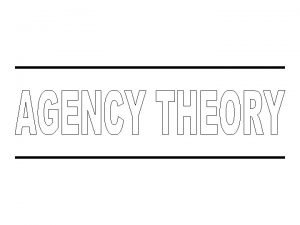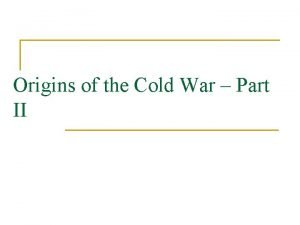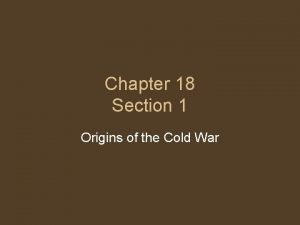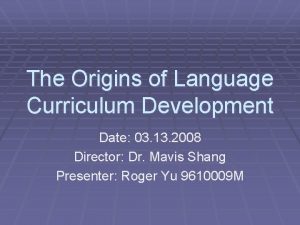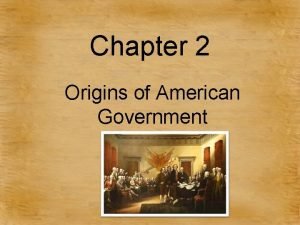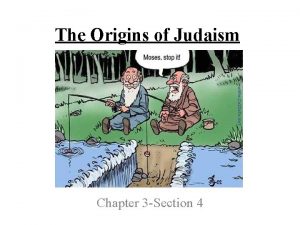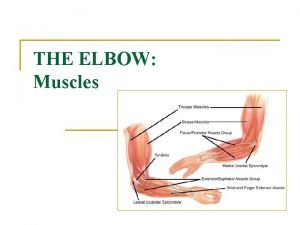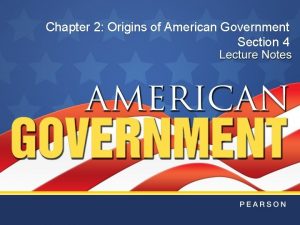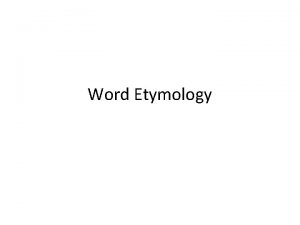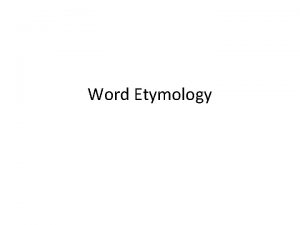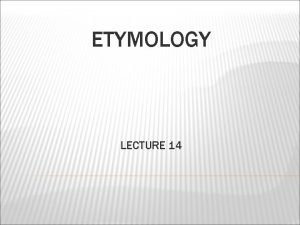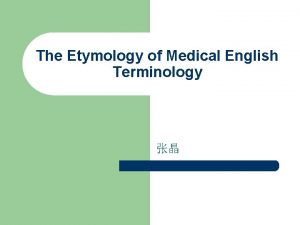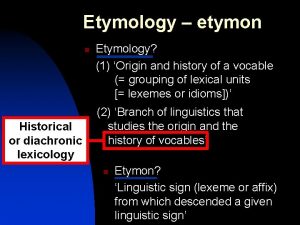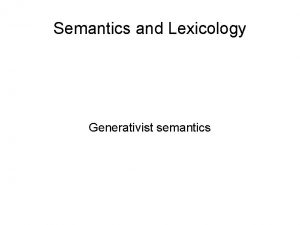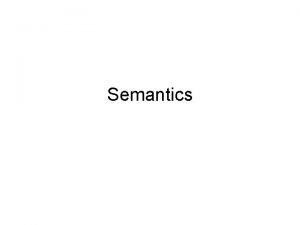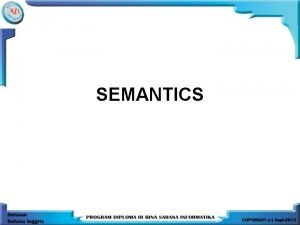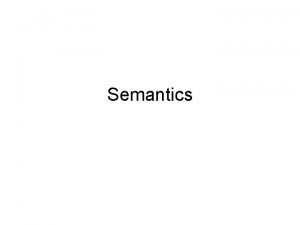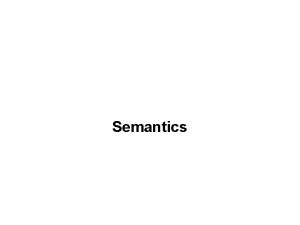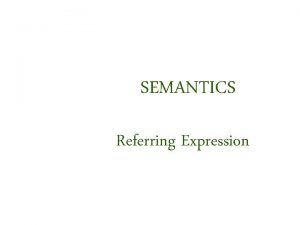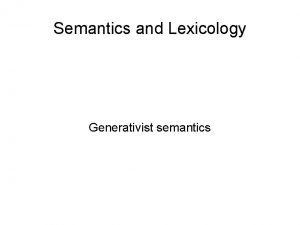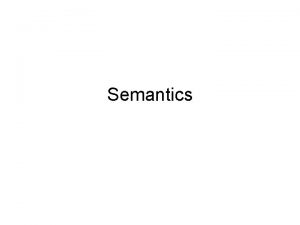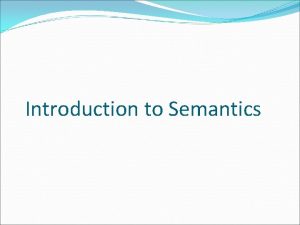Semantics What is Semantics Origins Definitions Issues Etymology

















- Slides: 17

Semantics

What is Semantics? • Origins • Definitions • Issues

Etymology • Semaino - Semiotics • Semantikos • Sema • Teche

Perspectives • 1. Philosophical • 2. Linguistic

COURSE CONTENTS • • • Perspectives of Understanding Meaning Definition of Meaning Relationships ( Lexical/Sense Relations) Word vs. Sentence Meaning Literal and Non-literal Meaning and the Human Mind Meaning and Contexts Word Meaning and Syntactic Rules Universality of Meaning Change

Sense

• Semantic feature – Semantic feature analysis • Meaning component – Componential analysis

Semantic Feature Analysis, • the description of the meaning of words through structured sets of semantic features, using the binary feature given as + , - or + / -

SEMANTIC FEATURES/SEMANTIC COMPONENTS • Meaning of a word is a complex of different semantic features (also semantic primitives/primes). There are semantic units smaller than the meaning of a word. • boy = HUMAN, YOUNG and MALE • girl = HUMAN, YOUNG and FEMALE • man = HUMAN, ADULT and MALE • woman = HUMAN, ADULT and FEMALE

• • YOUNG and ADULT combined as ADULT YOUNG = –ADULT MALE and FEMALE combined as MALE FEMALE = –MALE

• Proposition • Utterance • Sentence

• ANALYTIC SENTENCE - one that is necessarily true as a result of the senses of the words in it.

• Analytical sentences/propositions – tacit agreement about the senses of its words – always true – Tautology (useless repetition? ? ) • Synthetic sentences/propositions – can be sometimes true, sometimes false

• A CONTRADICTION is a sentence that is necessarily FALSE, as a result of the senses of the words in it. Thus a contradiction is in a way the opposite of an analytic sentence.

• SYNTHETIC sentence is one which may be either true or false by virtue of the way the world is.

• Circle A for analytic, or S for synthetic, as appropriate. For some, you will have to imagine relevant situations. • • (1) John’s brother is nine years old A/S • (2) John’s nine-year-old brother is a boy A/S • (3) Sam’s wife is married A/S • (4) Sam’s wife is not German A/S • (5) My watch is slow A/S • (6) My watch is a device for telling the time A/S

Circle the following sentences A for analytic, S for synthetic or C for contradiction, as appropriate. For some you will have to imagine relevant situations. (1) That girl is her own mother’s mother A / S / C (2) The boy is his own father’s son A/S/C (3) Alice is Ken’s sister A/S/C (4) Some typewriters are dusty A/S/C (5) If it breaks, it breaks A/S/C (6) John killed Bill, who remained alive for many years after A/S/C
 Pengertian semantik secara etimologi
Pengertian semantik secara etimologi Compare procedural semantics and declarative semantics.
Compare procedural semantics and declarative semantics. Origins of agency theory
Origins of agency theory How do the origins of folk and popular culture differ
How do the origins of folk and popular culture differ Origins of the cold war
Origins of the cold war Chapter 2 origins of american government vocabulary
Chapter 2 origins of american government vocabulary Divine origins pastor andrew
Divine origins pastor andrew Chapter 18 section 1 origins of the cold war
Chapter 18 section 1 origins of the cold war Selection and gradation in language teaching
Selection and gradation in language teaching Origins of american government chapter 2
Origins of american government chapter 2 Chapter 3 section 4 the origins of judaism answer key
Chapter 3 section 4 the origins of judaism answer key Biceps attachment
Biceps attachment The study of word origins is called
The study of word origins is called Chapter 1 foundations of government answer key
Chapter 1 foundations of government answer key Origins of american government section 4
Origins of american government section 4 Vaudeville origins
Vaudeville origins Quad muscles action
Quad muscles action The origin of species chapter 24 manhwa
The origin of species chapter 24 manhwa


